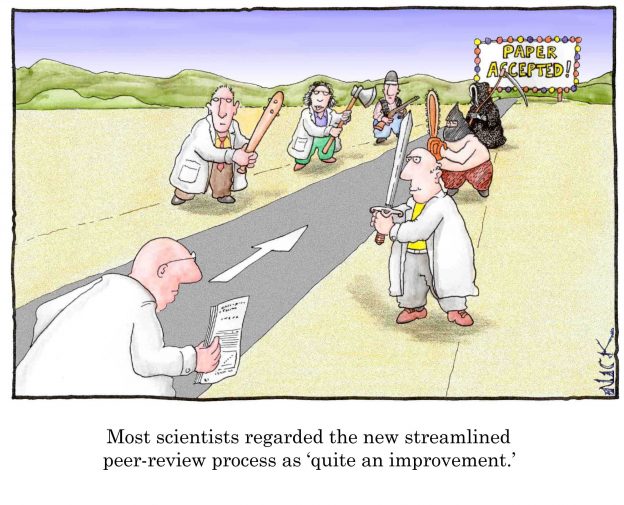Authorship in scientific publication
Posted on 5th May 2017 by Ashline Amilcar

The authorship issue
Publication is so important in science that it is referred as the “academic currency” of the scientific world (1). The productivity and prestige of a research team might be established through their publication rate. The latter is also considered when applying for funding and academic promotions. The pressure on academic faculties to publish, as well as research projects increasingly being the product of inter-disciplinary contributions, has led to a growing number of authors being listed on papers and authorship issues have ensued (2).
The International Committee of Medical Journal Editors (ICMJE) (3) recommends that authorship be based on the following 4 criteria:
- “Substantial contributions to the conception or design of the work; or the acquisition, analysis, or interpretation of data for the work; AND
- Drafting the work or revising it critically for important intellectual content; AND
- Final approval of the version to be published; AND
- Agreement to be accountable for all aspects of the work in ensuring that questions related to the accuracy or integrity of any part of the work are appropriately investigated and resolved.”
Guidelines (4) that address authorship issues seem to agree that an author is someone who has made a great contribution to the research and takes responsibility for the published paper. Conversely someone who only provides funding for the paper does not deserve to be listed as an author. Criteria to attribute authorship vary among institutions and research groups or sometimes authorship may be attributed without following any criteria at all. The authors of a paper depend, in the end, on the agreements within the research group.
The order of the authors
The order in which the authors are listed in the paper is also important. Typically, the first and the last authors are the most honoured. The first author is, traditionally, the individual who has contributed the most to the research and who also takes responsibility for the paper as a whole. Therefore he or she often receives most of the credit for the published paper but also has primary responsibility if troubles arise. In a large author team, the last author may be the most experienced researcher of the team and the one who guides the research. Traditionally, “being in the middle” is a less desirable position, as the contribution of co-authors listed in the middle may be considered lesser.
The corresponding author communicates with the journal during the publication process and is contacted for further notifications. Usually, the author who is listed first or last will serve as the corresponding author. An “honorary author” refers to someone who is listed as an author for convenience but who does not meet formal authorship criteria. On the other hand, a “ghost author” is someone who has contributed to the research, meets the criteria to be an author, but doesn’t feature in the list of authors in the published paper.
Despite guidelines, it is not always obvious how to resolve the authorship problem. Some journals now report the specific contribution of each author or they explicitly indicate an equal contribution of the authors. The “co-first author” phenomenon is a trend in recognition of authors; whereby the “first-author credit” is given to more than one author (6).
Authorship and the undergraduate student
Finally, undergraduate students should be aware that publications are crucial for a researcher’s career. An undergraduate student can be an author of a paper but it depends on the student’s proactivity. Often, students may do the drill work in a research lab, but a generous tutor might appreciate the initiative of a student to design a project, to participate in its intellectual discussions and even draft a manuscript.
References
- Dance A. Authorship: Who’s on first? Nature 489,591–593
- Anne Kornhaber R, McLean LM, Baber RJ. Ongoing ethical issues concerning authorship in biomedical journals: an integrative review. Int J Nanomedicine [Internet]. 2015;10:4837–46. Available from: https://www.ncbi.nlm.nih.gov/pmc/articles/PMC4525802/
- International Committee of Medical Journal Editors. Defining the role of authors and contributors [Internet] . 2017 [cited 2017 Feb 26]. Available from: http://www.icmje.org/recommendations/browse/roles-and-responsibilities/defining-the-role-of-authors-and-contributors.html
- Wager E. Recognition, reward and responsibility: Why the authorship of scientific papers matters. Maturitas. 2009:109-12.
- Avula J, Avula H. Authors, authorship order, the moving finger writes. J Indian Soc Periodontol [Internet]. 2015 [cited 2017 Feb 26];19(3):258–62. Available from: http://www.ncbi.nlm.nih.gov/pubmed/26229263
- Conte ML, Maat SL, Omary MB. Increased co-first authorships in biomedical and clinical publications: a call for recognition. FASEB J [Internet]. Federation of American Societies for Experimental Biology; 2013 Oct [cited 2017 Feb 26];27(10):3902–4. Available from: http://www.ncbi.nlm.nih.gov/pubmed/23839935


